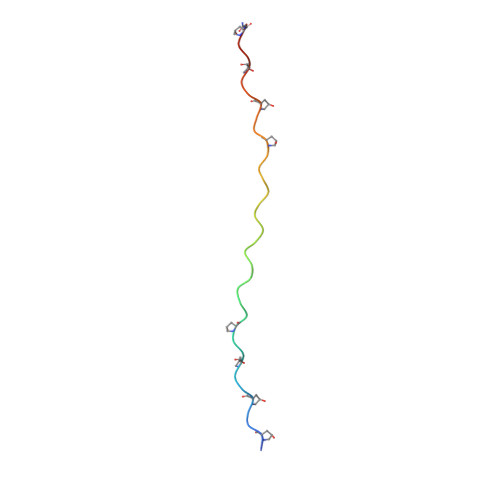COMP and TSP-4 interact specifically with the novel GXKGHR motif only found in fibrillar collagens.
Gebauer, J.M., Kohler, A., Dietmar, H., Gompert, M., Neundorf, I., Zaucke, F., Koch, M., Baumann, U.(2018) Sci Rep 8: 17187-17187
- PubMed: 30464261
- DOI: https://doi.org/10.1038/s41598-018-35447-8
- Primary Citation of Related Structures:
6HG7 - PubMed Abstract:
COMP (cartilage oligomeric matrix protein) is a member of the thrombospondin family and forms homopentamers as well as mixed heterooligomers with its closely related family member TSP-4. COMP is long known to bind to collagens and to influence collagen fibril formation. Recent work indicates that already intracellular interaction with collagen is important for collagen secretion. However, the exact binding site of COMP on the collagen triple helix has not been described up to now. In this study we have identified a GXKGHR motif on the collagen II helix to bind to COMP, using a recombinantly expressed collagen II peptide library. This binding sequence is conserved throughout evolution and we demonstrate that TSP-4 binds to the same sequence. The identified binding motif overlaps with the recognition sites of many other collagen-binding partners (e.g. PEDF, Heparin) and also spans the lysine residues, which form collagen cross-links. COMP might thereby protect collagen helices from premature modification and cross-linking. Interestingly, this motif is only found in classical fibrillar collagens, although COMP is known to also bind other types. This might indicate that COMP has a unique interface for fibrillar collagens, thus making it an interesting target for the development of antifibrotic drugs.
- Institute of Biochemistry, University of Cologne, Cologne, Germany. jan.gebauer@uni-koeln.de.
Organizational Affiliation:


















